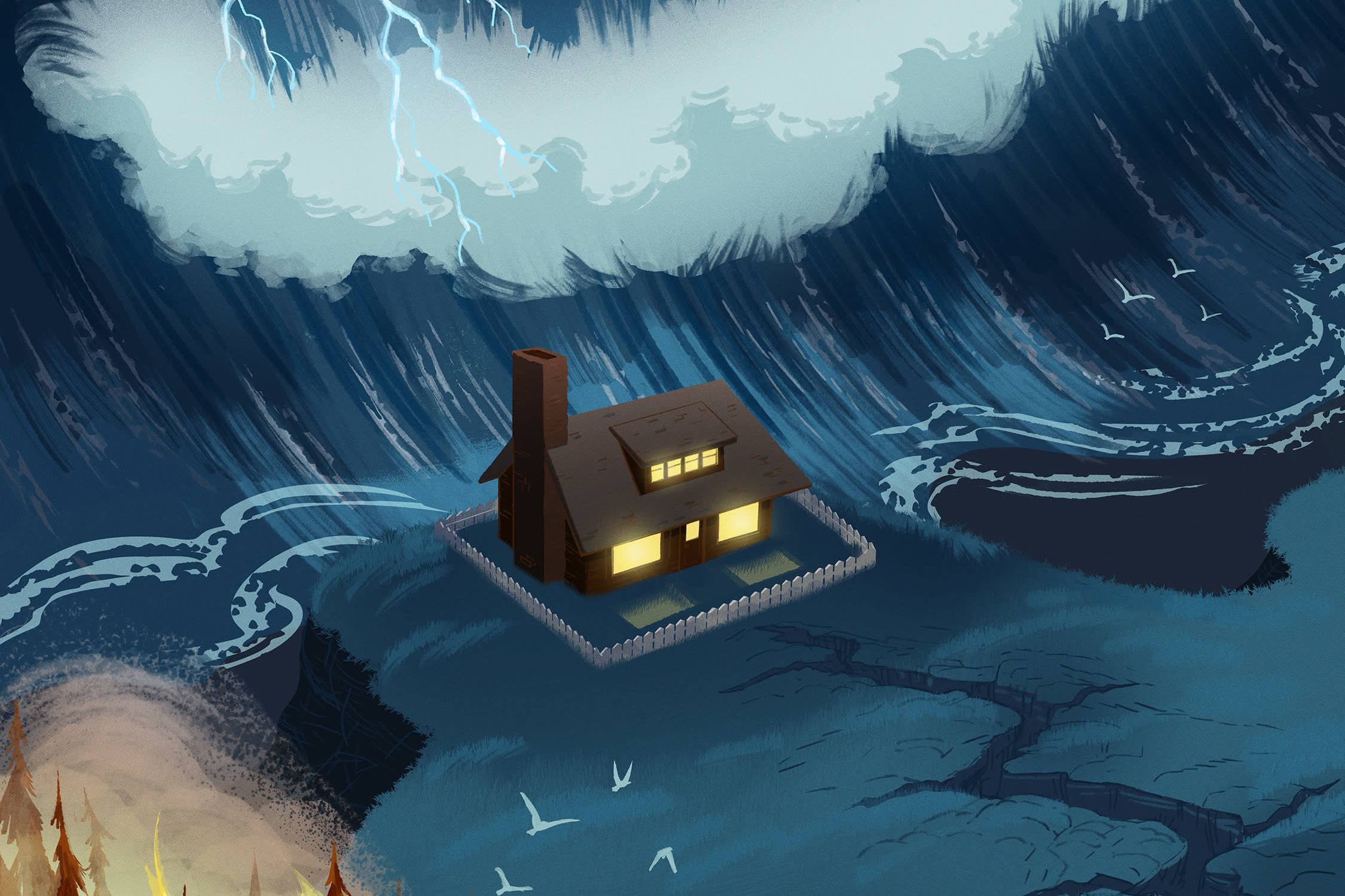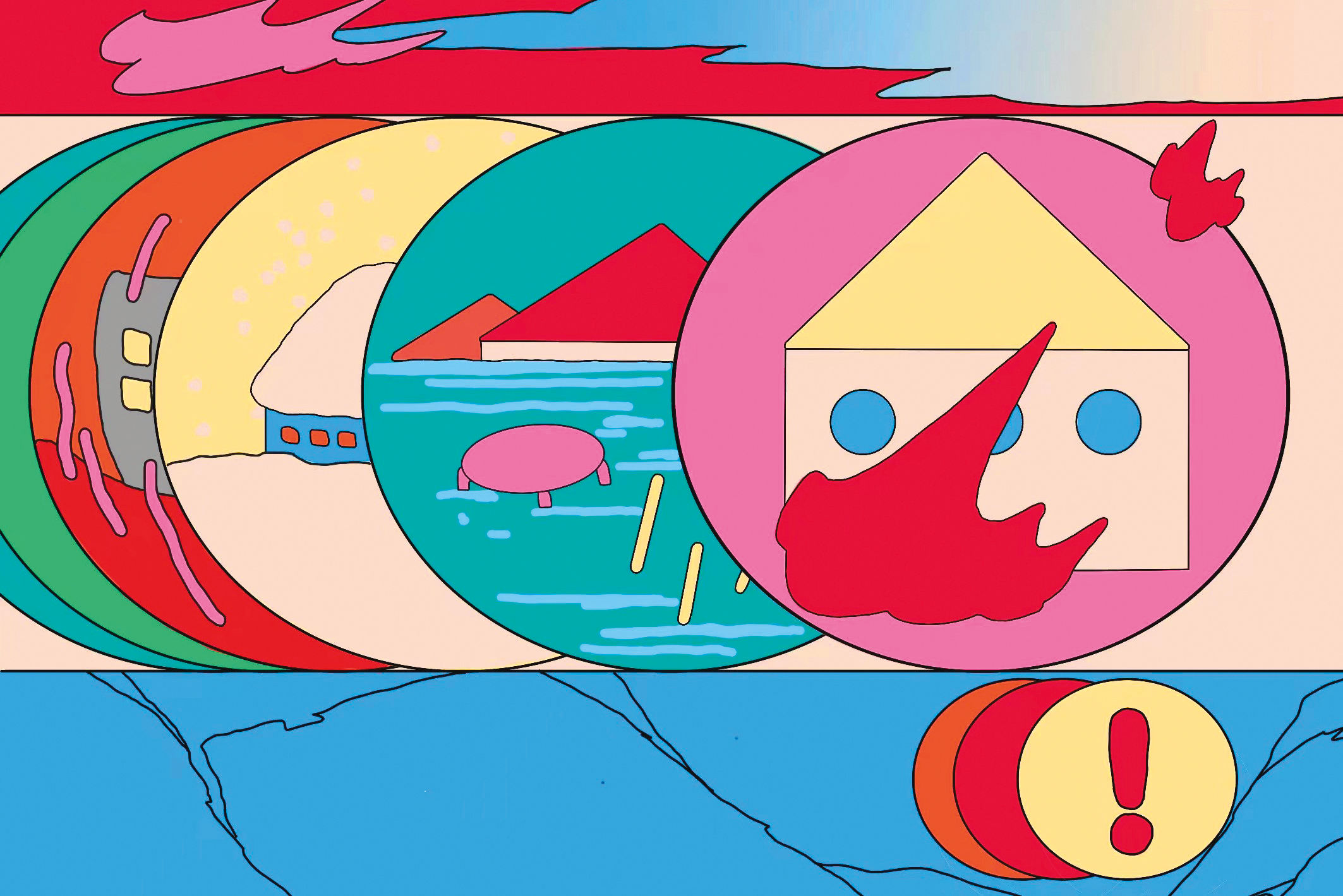
How Ready Are You for the Big One Really? Let’s Find Out.
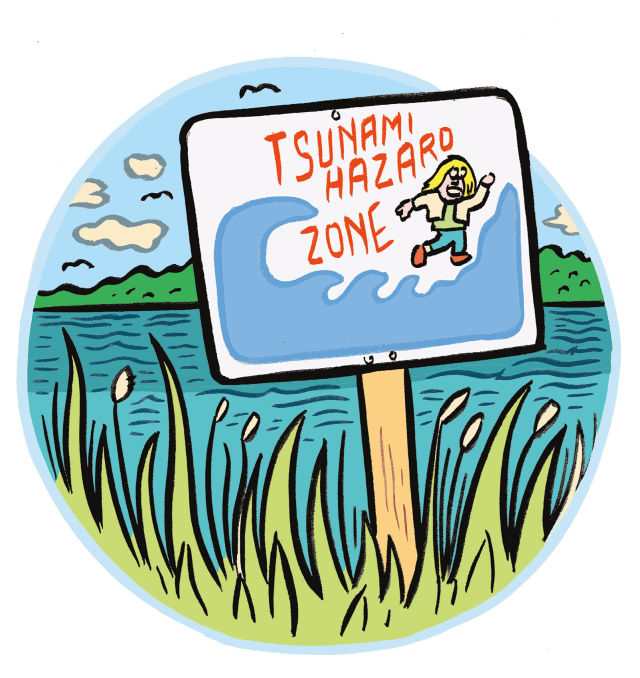
1. When you see the “Tsunami Hazard Zone” signs out at the coast, your first thought is:
A. “I remember seeing those years ago and rolling my eyes—’A tsunami? Here?’ Boy, things have changed.”
B. “How wild would it be if we were actually on the beach when the shaking started? I wonder if we’d have time to get to higher ground.”
C. “All those schoolkids out there in unprotected buildings. I’d better be ready to help.”
D. [A map of the coast flashes into your head. You know your vacation rental is out of the orange zone (dangerous) but in the yellow zone (still risky). You are two blocks from the green zone (safe). If the emergency app* on your phone wakes you up in the middle of the night (once they get the earthquake alert system operational in Oregon), you may have 30 seconds before the shaking starts and 15 minutes before the tsunami hits the beach. And you will need to get to the green zone on foot because cars are death traps in water.]
E. You do not travel to the coast.
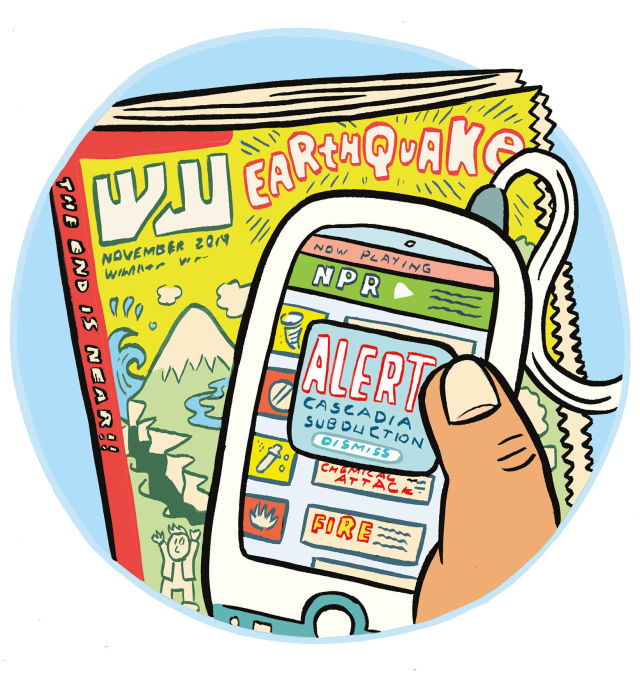
2. How do you get your news?
A. Willamette Week
B. NPR on my way to work; Slack
C. An app that updates me on humanitarian crises with tips on how to donate.
D. I have alerts set. Whenever something hits the interwebs, I get a notification. The one I really watch is “Cascadia Subduction Zone.”
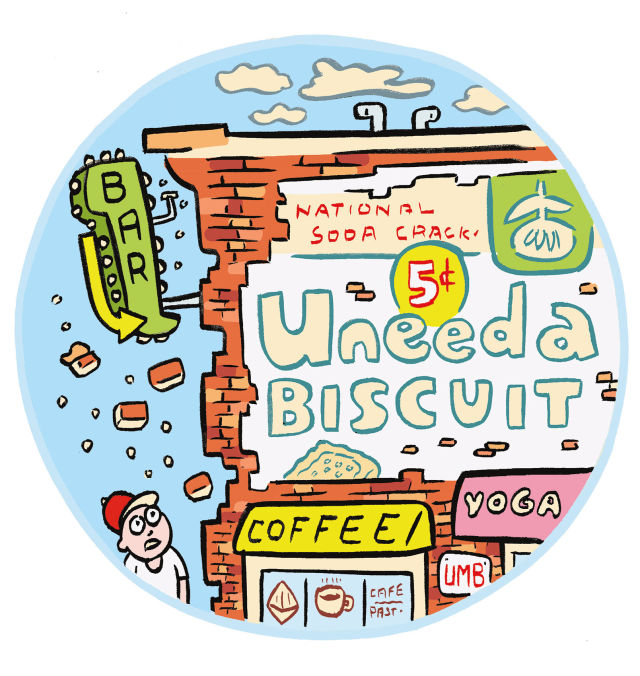
3. When you pass a red brick building with cheerful, faded 1950s-era advertising on it, you think:
A. “I love this city.”
B. “You’d think that would have a plaque labeling it as unsafe in a quake without retrofitting—except when Portland tried to pass that ordinance, masonry building owners resisted because the plaques would make their buildings almost instantly worthless.”
C. “I need to get my friends who just moved into that brick building with no seismic retrofitting to move again.”
D. “I shouldn’t be standing here.”

4. When your sister talks about finding a preschool for her 3-year-old, your first question is:
A. “Will they get to play outside?”
B. “What does it cost?”
C. “May I suggest you find a school on the same side of the river as your house?”
D. “Is the school’s seismic retrofit the kind that just keeps the street clear by holding the façade in place but does nothing to stabilize the inside of the building?”
Results
To calculate your Earthquake Preparedness Personality Type, give yourself 1 point for every “A” answer, 2 points for every “B,” 3 for a “C,” 4 for a “D,” and 5 for an “E.” Add them up.
4–6 points: THE OG PORTLANDER
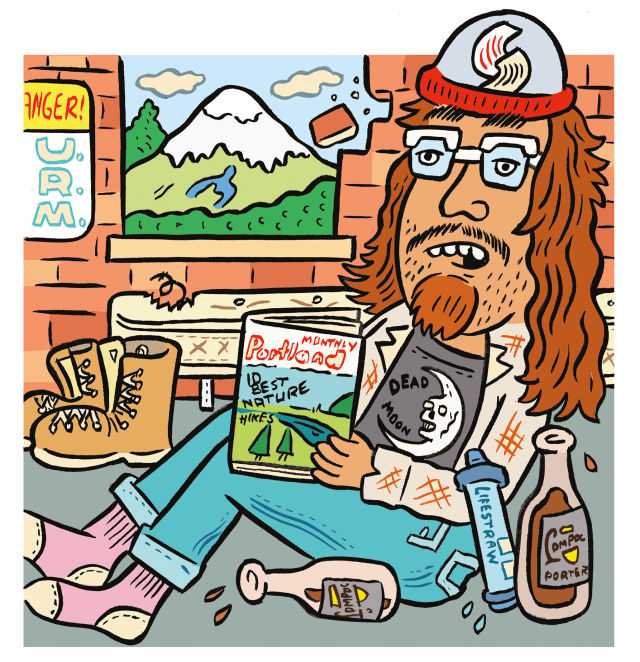
You have lived in Portland since before earthquake research was widely publicized (or you haven’t been able to bring yourself to look at the research). The earthquake doesn’t feel real. And you don’t want it to feel real. You love this place: the trees, the cliffs, the water. You can’t let yourself think about how completely the whole Northwest will change when this quake hits.
A small piece of good news: as long as they aren’t caught in landslides, healthy trees tend to do OK in earthquakes. And there are some things you can do that will significantly increase your odds of being around to see the trees.
One: the thing that will keep you safest during a quake is to drop, cover, and hold. Falling objects (from cups to the ceiling) are the things most likely to hurt you during the shaking. In the spaces you frequent, what are the strongest pieces of furniture that you could get under and hold onto? And speaking of falling objects: a common earthquake-survivor injury is cut feet. One place the quake is likely to catch you shoeless is in bed. Keep sturdy shoes near your bed to avoid slicing your feet on what used to be your windows.
Two: if you live in a masonry building without retrofitting, move out. Wood-frame buildings are much safer. Oregon State University geophysicist Chris Goldfinger, an expert on the Cascadia Subduction Zone, suggests that if moving feels like too much of a hassle, you should “Google up some images of URM [unreinforced masonry] buildings after earthquakes and scan them slowly. This will only take five minutes at most, and should be convincing.” (If you are caught inside a URM building in a quake, stay put. Being just outside one is even more dangerous than being inside, since the walls usually collapse outward.)
Third: get a LifeStraw ($19.95). Even minor shaking is likely to disrupt lifelines (power, water, sewage) for weeks at least. LifeStraws will let you drink outdoor water. If you have one, you (and potentially a lot of people around you; they’ll each filter 1,000 gallons) will not die of dehydration or get sick from waterborne diseases before emergency services reach your area.
7–10 points: THE “I KNOW, BUT ...”
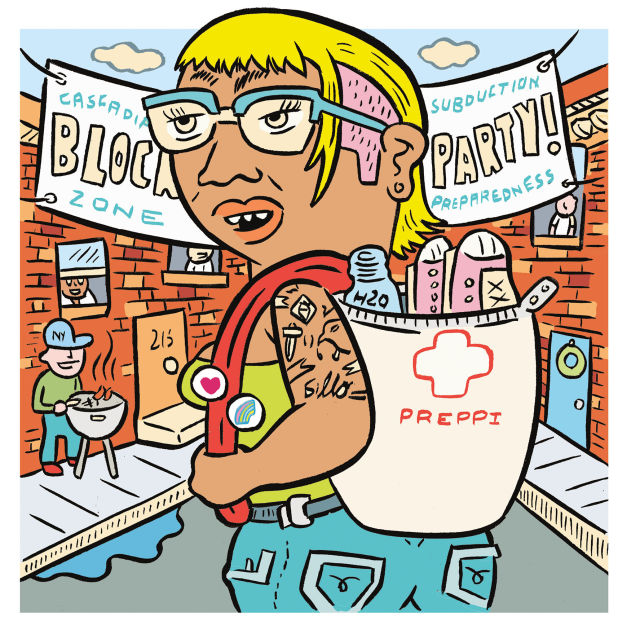
You know: there’s a 37 percent chance a magnitude 8 quake will happen in the next 50 years. You ought to be prepared, but it feels overwhelming and there are so many other things in your life with lower catastrophe factors and higher probabilities. Say, your kids wanting dinner tonight. Or the cost of missing a work deadline.
Good news! There are preparations that are both manageable and nearly certain to be useful after the quake. One: throw a block party. Yes, really. According to Alice Busch, the division chief at Multnomah County’s Office of Emergency Management, one of the key predictors of disaster resilience is your social connectedness. Because different kinds of people have different skills and ideas, the more diverse your social connections are, the better.
Two: get one or more sturdy bags and fill them each with a few days’ worth of supplies. You can find lists at redcross.org. Or visit preppi.co, which makes a one-person, three-day emergency kit. Other things to put in your go bag: sturdy shoes, a waterproof jacket, and the most important phone numbers in your life, written in waterproof ink on thick paper. Then think about where to store it (or them). Your car is a good option, if you have one. You’ll want a bag wherever you or your family members spend significant amounts of time. But perfection is your enemy: something, anywhere, is vastly better than nothing.
11–13 points: THE “LET ME HELP”
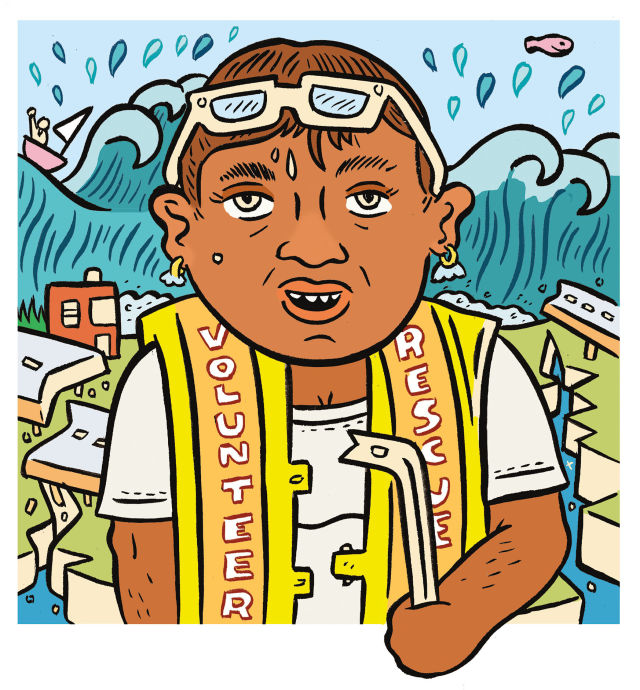
You are horrified by the idea that the Oregon Resilience Plan predicts 650–5,000 deaths outside the tsunami zone (in addition to the 600–5,000 inside). But even in the worst-case scenario, that leaves more than 99 percent of Portlanders still alive, and you know that if you are in the 99 percent, you will want to make things better for other people.
MultCo disaster prep pro Busch recommends you start thinking now about how you would like to help. It does not matter what you are good at, she insists: whatever it is will be needed after a quake. But uninformed goodwill can be a huge liability for disaster responders. Busch still remembers the day an entire TriMet bus showed up after the 2017 Eagle Creek fire, loaded to the gills with water. Volunteers started unloading in front of the Troutdale sherriff’s office garage doors. “You can’t do that,” she told them. “Police officers are responding to urgent messages inside. You will take them away from their work to move all this water out of the way. And nobody here needs water.” A little research now will help you to provide legit help. A great place to start your research is with the Multnomah County Emergency Operations team, local fire stations, or NGOs. (If you find yourself faced with an emergency, wanting to help but having done no research, Busch says sending money is the safest option.)
14–17 points: THE “FULL METAL PANIC”
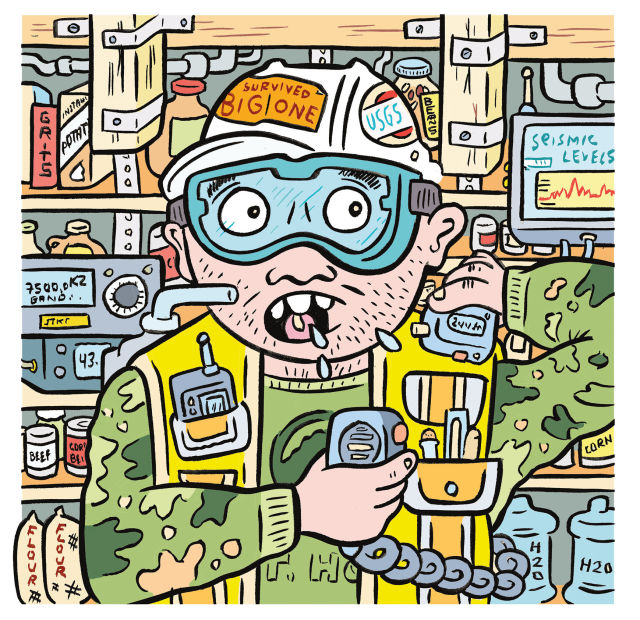
The Big One defines what it means to you to live in Portland. You think about it a lot, worry about it more than almost anything else in your life, and have researched prepping options to death. Maybe you have acted on all your research and are now teaching Community Emergency Response Team (CERT) classes in your neighborhood. Go you. Seriously.
But if all your research has overwhelmed you, and you’re waking up at night hating yourself for all the things you haven’t done, take heart. Do the things for the first three types (one at a time). Then, if you live in a wood-frame building, work with a contractor to get the building bolted to its foundation, which is the best predictor of whether your house will stay on its foundations and be inhabitable, or slide off and be uninhabitable (and unrepairable) after a quake. For a baseline quote, try someone like Daryl Hare (secureseismic.com), who explains procedures patiently and won’t overwhelm you.
Also, push for better statewide seismic preparedness, and help resource your community. For example: if you get yourself a ham radio license and a basic radio setup, you could be a lifeline to call for help and keep your neighborhood connected to the outside world while cell towers, internet cables, and phone lines are out of commission.
And remember: there is a 63 percent chance a magnitude 8 or higher Cascadia quake will not happen in the next 50 years. Do what you need to do to feel reasonably prepared. But don’t pour your whole life into your own preparedness. Good luck and stay safe out there!
You can download free apps like My Earthquake Alerts & Feed or Earthquake + Alert, Map & Info on Apple App Store or Google Play
